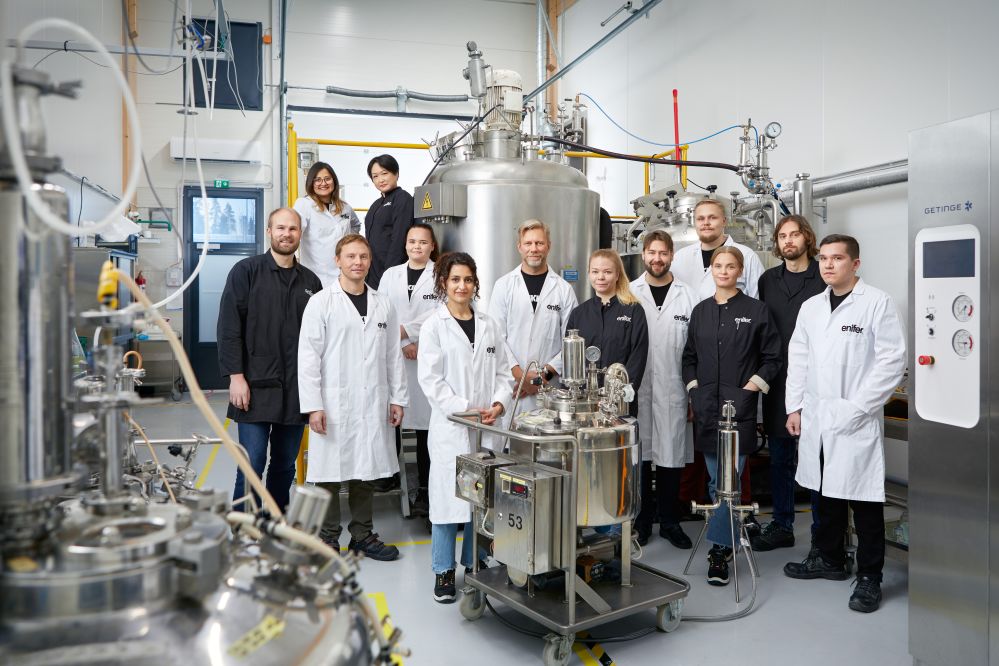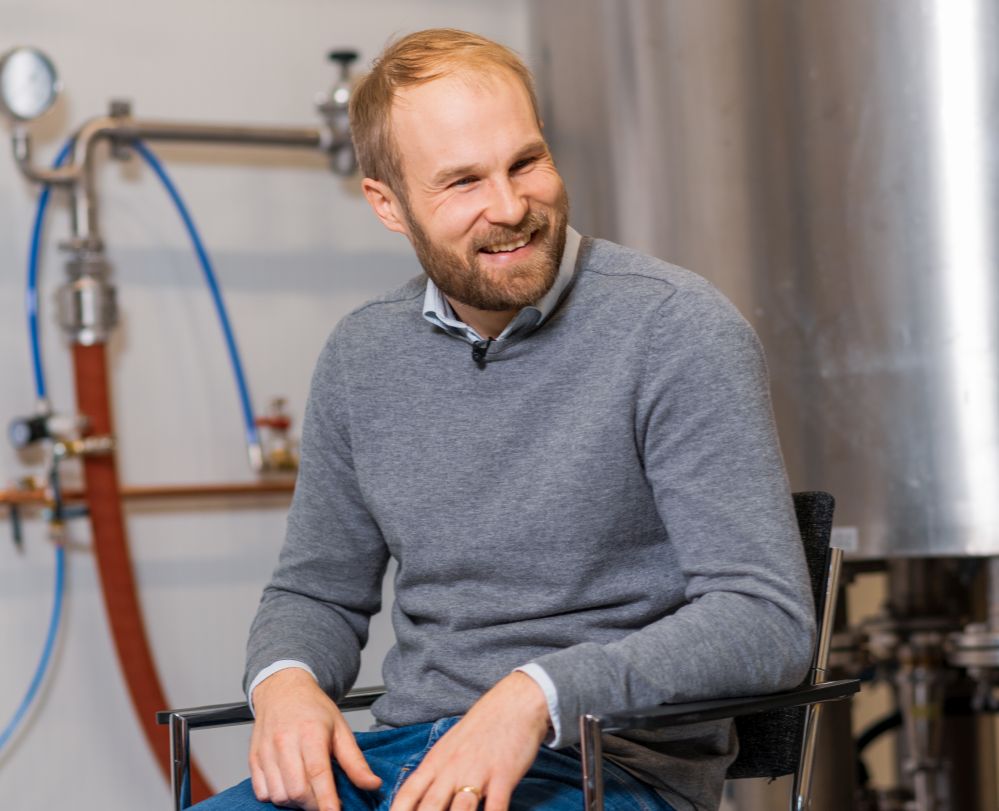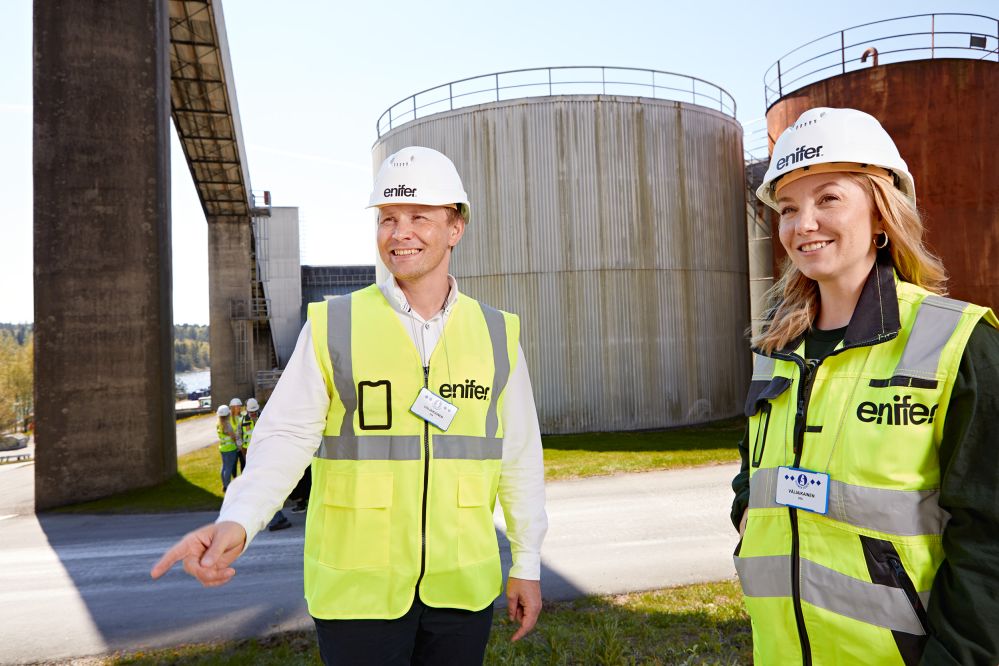Finnish startup Enifer has raised €36 million ($39.1 million) from a mix of debt and equity to fund a large-scale facility growing a source of mycoprotein that was first commercialized as animal feed 50 years ago.
The funding package includes a €15 million ($16.2 million) series B equity round led by the Finnish private equity fund Taaleri Bioindustry Fund I, with follow-on investments from existing shareholders Nordic Foodtech VC, Voima Ventures, and dairy giant Valio.
Enifer has also secured a €7 million ($7.6 million) junior loan from the Finnish Climate Fund; a €2 million ($2.2 million) climate and environmental loan from Finnvera; and a previously reported €12 million ($13 million) grant from Business Finland.
Biomass fermentation space heating up
Enifer is one of a flurry of players in the so-called ‘biomass fermentation’ space, whereby microbes grown in sugary water in large steel bioreactors are the end product, in contrast to precision fermentation, where microbes are used as tiny factories that produce high-value ingredients such as enzymes.
Other companies growing fungi via biomass fermentation include industry pioneer Quorn; ENOUGH Foods in the Netherlands; Infinite Roots and Nosh.bio in Germany; Better Meat Co, Nature’s Fynd and Meati Foods in the US; MycoTechnology in Oman; MycoSure in South Africa; and Maia Farms in Canada. These are complemented by players such as MyForest and Mush Foods, which are growing fungi via solid-state fermentation on trays without bioreactors.
Some of the above are focused on meat alternatives, while others are spreading their bets by targeting a broader range of application areas from cheese, yogurts and baked goods to pet food.
For example, Enifer’s core product—a protein- and fiber-rich powder with a neutral taste and color—will initially be targeted at pet food (60%+ protein) and aquaculture (up to 65% protein). This will be followed by human food applications (up to 55% protein) from meat and dairy alternatives to snack bars, says the firm, which plans to file for Novel Food approval in Europe shortly.
The ingredient—which was in commercial production from 1975 to 1991 as a source of feed for pigs and chickens—is produced by the fungal strain Paecilomyces variotii KCL-24 (brand name ‘PEKILO’) and was historically fed with spent sulfite liquor, a by-product of paper making.
Enifer—which was spun out from the VTT Technical Research Centre of Finland in 2020—uses the same fungi strain but has upgraded the process to work with a broader range of feedstocks, cofounder and CEO Simo Ellilä told AgFunderNews.
“Our aim is to use the best source of side stream raw material at any given time. Our initial feedstocks are not set in stone yet. Molasses is the option that is always available on-site, as our new plant will be at a sugar refinery, but we’re looking at several different options that offer sufficient scale at suitable cost.
“We’ll likely be running two to three different raw materials during the first few years, including starting to run with lactose permeate [from partner and investor Valio] in anticipation of the switch to [human] food [applications] around 2028.”

Petfood, aquafeed, human food…
The plan is to produce primarily for pet food and aquaculture in 2026-27, said Ellilä, who has established partnerships with major players in the feed and food industry including Skretting, the aquafeed division of Nutreco; petfood giant Purina; and dairy giant Valio.
Enifer’s new factory in Kirkkonummi, Finland, will be able to make up to 3,000 tons of PEKILO per year. It is expected to be completed by the end of 2025, with production ramping up in 2026.
Asked if the firm had any solid offtake agreements for the new plant, Ellilä said: “It’s currently a case of LOIs [letters of intent]. The aim is to convert them to binding offtakes for petfood and aquafeed in 2025 ahead of factory ramp-up in 2026. For food we don’t think it would be possible to have offtakes before regulatory approval, which will happen at the earliest during 2026.”
In human foods, he said, “We see greatest potential in substituting and complementing pea and soy protein concentrates and isolates. If you look at where those are used in kiloton scale, it’s mainly in alt meat. Alt dairy is also very promising and [partner and investor] Valio knows its stuff. Thanks to its neutral taste and color PEKILO can also be used across the board to fortify products in baking, pasta, bread, cereals, and snack bars with protein and fiber.”

Does the world need more mycoprotein?
Asked whether the market can sustain all the new mycoprotein capacity given that the alt meat market in particular appears to be cooling off in some regions, he said that not all players in the space are the same.
“We use side stream raw materials rather than dextrose as feedstocks, and our product doesn’t go through the cold chain. Plus we’re a pure b2b play making a dry ingredient that isn’t just a meat alternative, but a powder that can bring protein and fiber to a lot of applications that we’ve been actively testing with food industry partners.”
He added: “One area it works quite nicely in is dry extrusion, so we’ve tried it in breakfast cereals, pasta and all kinds of other products. Some of the other companies use glucose to grow fungal biomass, which they then sell wet through the cold chain as a chicken replacement, so they’re more locked into the alt meat market.”
Tech has ‘already been proven to work at scale’
Unlike some other startups getting into the space, Enifer’s process has already been proven at industrial scale, he said.
“We’re working with an old innovation that has already been proven. In Finland, the paper industry didn’t know what to do with its side stream after it was not allowed to dump it into lakes and rivers anymore. But it knew that fungi grows on it, and so after R&D, pilot tests and scale up, it built a commercial operation from 1975-1991 making pulping residue [the feedstock] into sustainable protein for pigs and chickens.”
But why did the original PELIKO operation shut down in the early 1990s if the market opportunity was so clear?
“The acute reason was that the raw material from the pulp industry dried up, plus the engineering company that built it went bankrupt,” Ellilä told us. “There were also various other factors [including the emergence of cheap soy imports that could compete with the mycoprotein in the feed market].
“We ran the math and realized that if we wanted to revive this process, we couldn’t just do exactly the same thing. If we were going to make this profitable, we had to find higher margin markets, so we have tweaked the growing conditions and also the feedstock to make products suitable for human, pet, and aquafeed markets.”
Meanwhile, using a strain that has already been commercialized has made things easier from a regulatory perspective, he added.
“Enifer has exclusive rights to the strain, which is naturally occurring, with no genetic engineering involved. We basically took that material package from the old factories and all the old animal studies to the European Commission and they agreed it’s safe for animal nutrition. So it’s approved for feed and petfood within the European single market and any jurisdiction that follows the EU such as Chile and Thailand.”

‘We missed that whole investment hype cycle’
While this is not the optimal time to raise capital, the fact that the PEKILO strain has been grown at industrial scale before has de-risked the enterprise for investors to some extent, such that Enifer can focus on the business case for the mycoprotein rather than having to prove its tech is scalable, he said.
“That fact [that it’s been done before] has been very valuable to us from the beginning. As we didn’t really get going until the beginning of 2021, we also missed that whole investment hype cycle. We don’t have a hyped valuation.”
For potential customers, he said, “There’s a sustainability angle for all of these end markets, as companies are trying to reduce their carbon footprint, and mycoprotein uses less water, land and energy than competing protein sources. In some markets such as aquaculture, we’ve also been getting a lot of data that the feed is beneficial to both salmon and shrimp.
“Other customers are interested in the vegan angle, while in petfood, they’re just looking for more high-quality protein.”
‘Remarkably straightforward’ downstream processing
As for the basic costs associated with running this kind of facility, he said, a biomass fermentation process (whereby you’re harvesting the microbes themselves) is cheaper than a precision fermentation process (whereby you’re engineering microbes to produce a target substance and then purifying that via a costly downstream processing operation).
But it’s still pretty pricey compared to a solid-state fermentation process (such as that deployed by Mush Foods and MyForest Foods) he acknowledged.
However, Enifer’s downstream process is “remarkably straightforward,” he added. “You have a solid/liquid separation step, then you dry it [the solids] into a fine powder for [human] food or make granules or pellets for [animal or pet] feed. It’s very easy compared to precision fermentation.”




